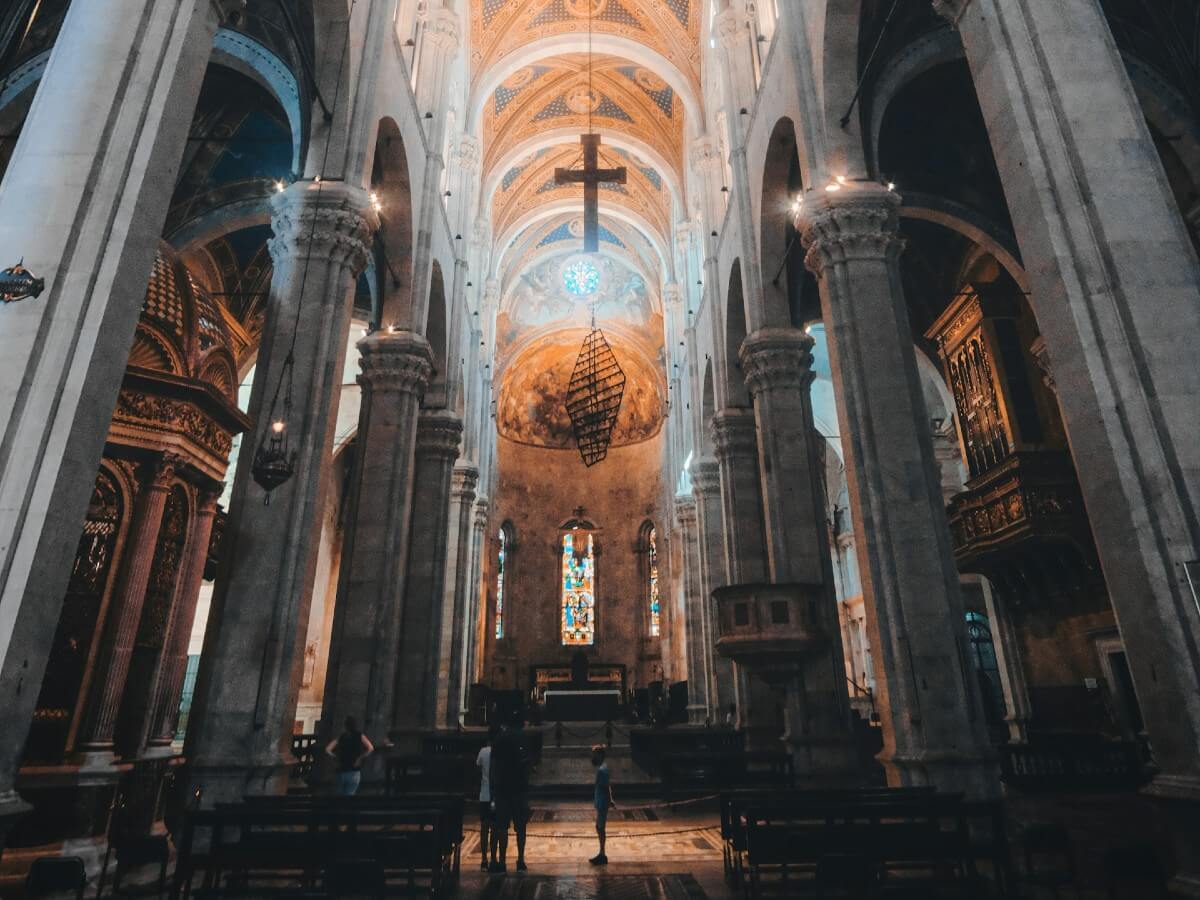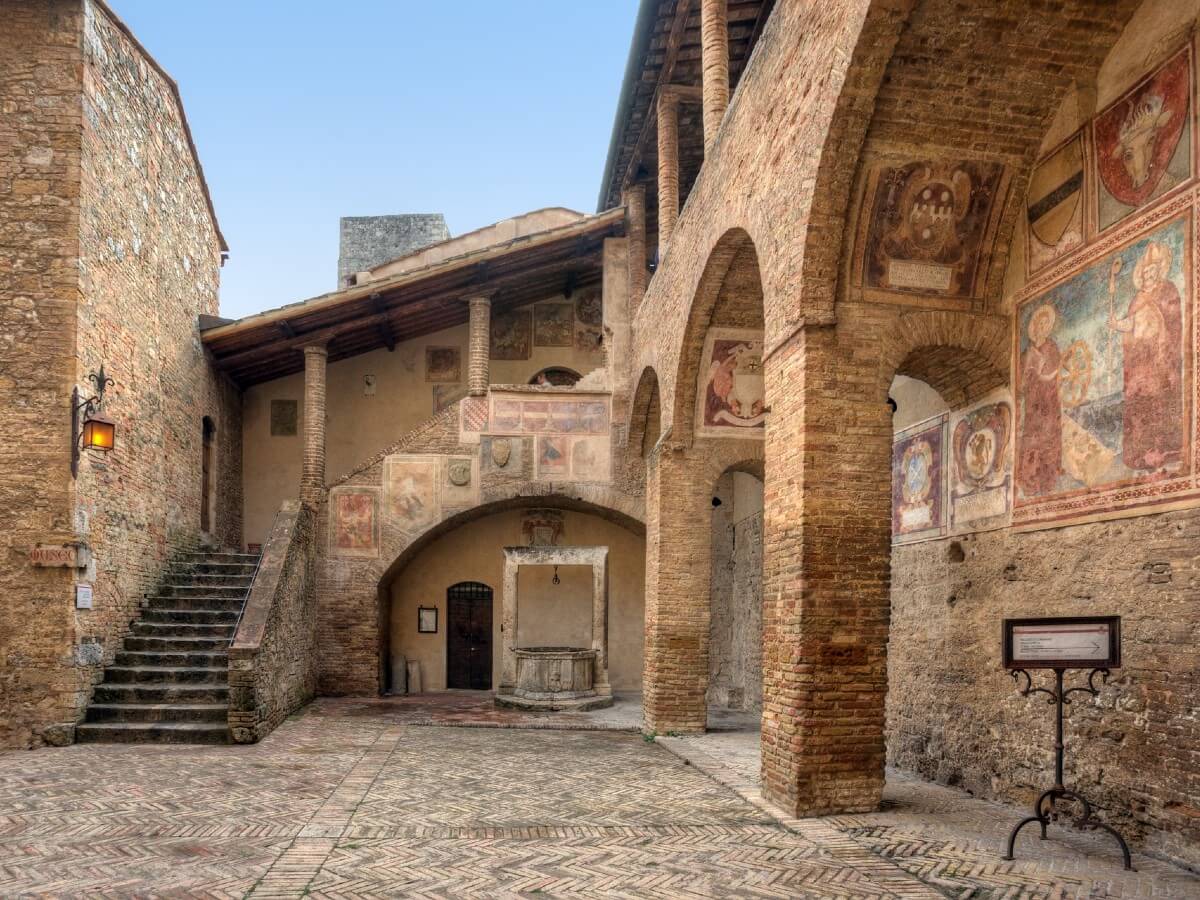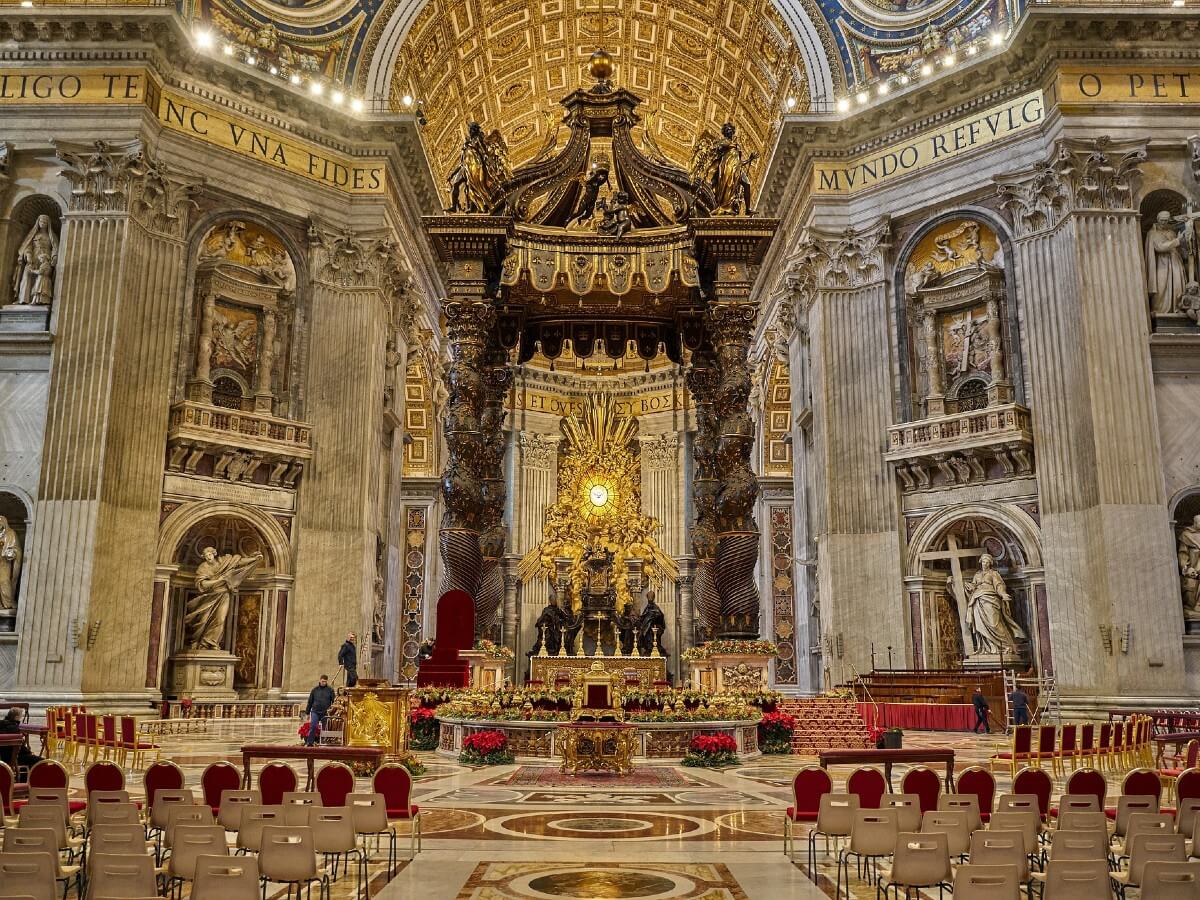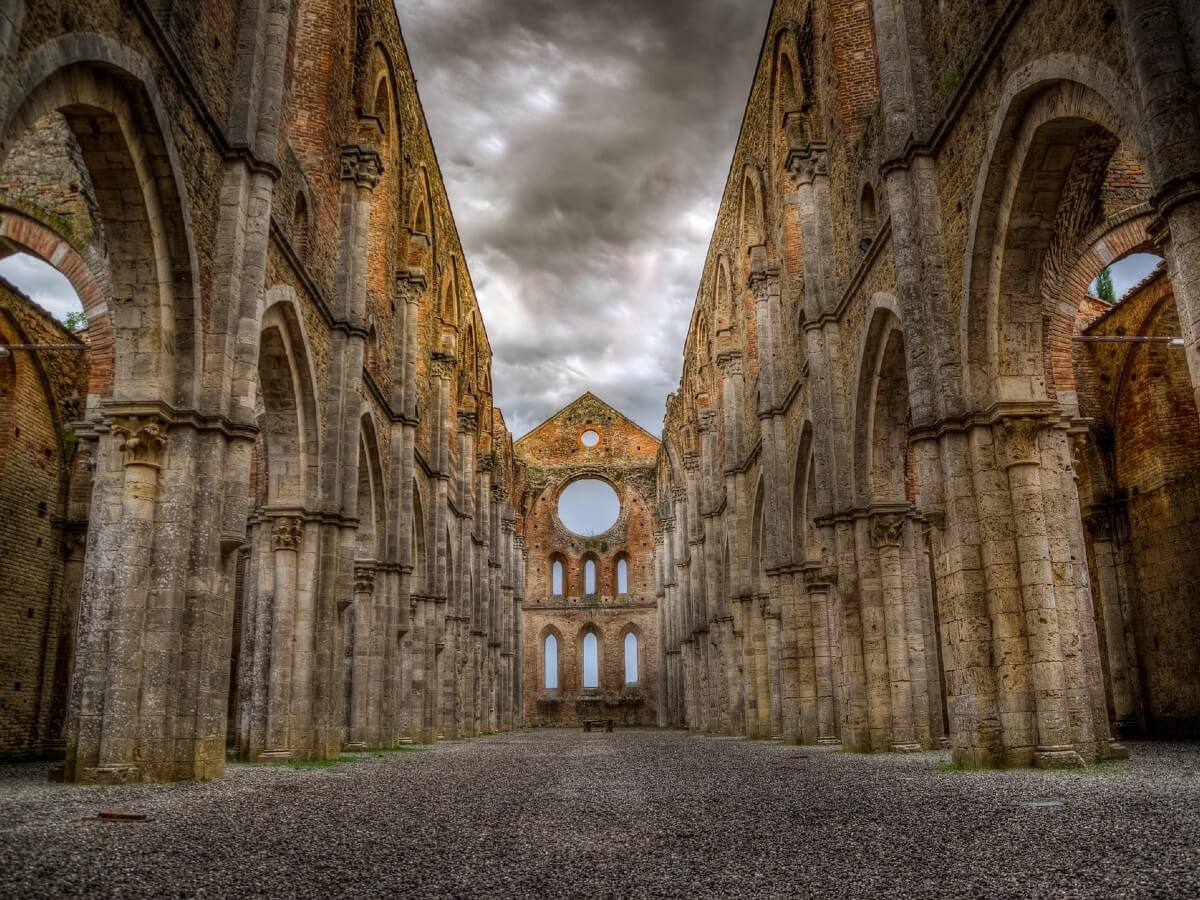A Via Francigena walking tour is more than a physical journey; it’s a pilgrimage through centuries of faith, culture, and creativity. From humble chapels tucked into the countryside to grand cathedrals that have stood for over a thousand years, the route features a wide variety of sacred art and hidden gems waiting to be discovered.
Whether you’re drawn by spirituality, history, or simple curiosity, the churches and artwork along the Via Francigena reveal a story of devotion that shaped Europe, and they remain one of the greatest rewards of this ancient trail.
Ancient Chapels in Unexpected Places
One of the joys of the Via Francigena is stumbling upon tiny chapels in villages or at crossroads, often centuries old and lovingly maintained by locals. These quiet spaces may not appear in guidebooks, but step inside and you’ll find frescoes faded by time, wooden altars polished by generations, or a simple candle flickering in the shadows.
It’s here, away from the crowds, that many pilgrims find the most intimate connection; a sense of stillness that can’t be replicated in grand cathedrals.
Sacred Art Along the Via Francigena
The Cathedral of San Martino, Lucca
Lucca is one of the jewels of the Via Francigena, and its cathedral is home to the Volto Santo (Holy Face), a wooden crucifix said to have been carved by Nicodemus, a contemporary of Christ. For centuries, pilgrims have detoured here to marvel at this sacred relic.
Take in the beauty of Lucca and the Cathedral of San Martino on the Via Francigena from Pontremoli to Lucca.

Abbey of San Gimignano and its Frescoes
Known for its medieval towers, San Gimignano also boasts remarkable fresco cycles that tell Biblical stories in vivid detail. They offer not only a glimpse into artistic expression of the medieval period, but also into how pilgrims once learned their faith through imagery.
Follow ancient pilgrim footsteps through San Gimignano while walking the Via Francigena from Lucca to Siena.

The Abbey of Sant’Antimo, near Montalcino
Situated in the rolling terrain of the Tuscan hills, this Romanesque abbey is said to have been founded by Charlemagne. Inside, the play of light on stone creates an atmosphere of deep serenity, and if you’re lucky, you might hear Gregorian chants resonate through its halls.
Visit the Abbey of Sant’Antimo as you explore the Via Francigena from Siena to Montefiascone.

St. Peter’s Basilica, Rome
The final destination for many, St. Peter’s is not only the heart of the Catholic world, but a masterpiece of Renaissance art and architecture. Michelangelo’s Pietà, Bernini’s soaring dome, and the sheer scale of the basilica make it the ultimate culmination of the Via Francigena.
Experience the beauty of St. Peter’s on the final stage of the Via Francigena from Montefiascone to Rome.

Hidden Treasures Beyond the Guidebooks
Why Sacred Art Matters on the Journey
Even for those who are not religious, sacred art along the Via Francigena offers something universal: a window into the human spirit. These works were created to inspire, to comfort, and to connect communities; the very same things many travelers seek today.
Walking the Via Francigena isn’t just about traversing the Italian countryside, it’s about moving through centuries of human creativity and devotion. Every church, fresco, and sculpture tells a story, and together they form one of the world’s greatest open-air museums.

A Pilgrimage for the Soul and the Senses
Whether you’re an art lover, a history buff, or simply curious, the sacred treasures along the Via Francigena add layers of meaning to your journey. They remind us that this path has been walked for over a thousand years, by people searching for hope, beauty, and belonging.
And perhaps, as you step into a quiet church or gaze at a centuries-old fresco, you’ll feel part of that timeless story too. Contact a travel advisor today and start planning your life-changing pilgrimage along the Via Francigena.
